What does skin cancer really look like?
Learn how to tell what splotches, sores, and other marks on your skin really mean.
Updated on August 8, 2022

One in five Americans will have some type of skin cancer in their lifetime, according to the American Academy of Dermatology (AAD). To put that into perspective, about 9,500 people in the United States are diagnosed each day.
Skin cancer is largely caused by frequent sun exposure, particularly exposure that results in sunburn or blistered skin. The ultraviolet (UV) rays from the sun cause skin damage and damage genes in our cells that lead to abnormal skin growth.
UV rays come in two forms, UVA and UVB. They are both harmful to your skin, and both contribute to aging, eye damage, and skin cancer.
Some people are more at risk for skin cancer than others, including those who have:
- Fair skin, freckles, blonde hair, red hair, or blue eyes
- A history of intense sun exposure or sunburn
- A history of using tanning beds
- A large number of moles
- A family history of melanoma
- A compromised immune system
It’s important to remember that skin cancer—no matter what type it is—may look and feel different for different people and appear in a variety of shapes, sizes, and colors. So, it’s always important to consult with a dermatologist if you notice something out of the ordinary. It takes specialized knowledge to know whether a spot is harmless or cancerous.
Here’s a visual guide to the most common types of skin cancer.
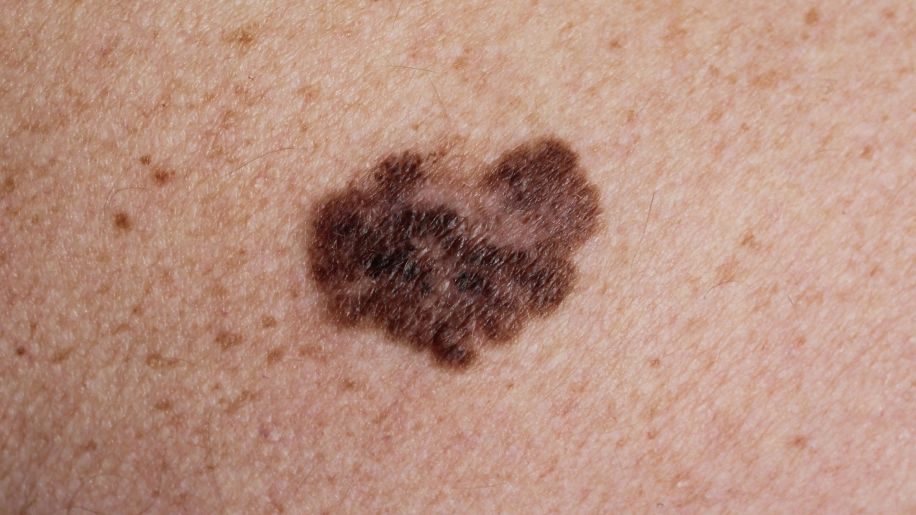
Know your melanoma ABCDEs
Moles and lesions can be hard to identify, but to help you understand what to look for, the AAD has put together the following guidelines. Talk with a dermatologist if you notice any of these:
- A (Asymmetry): Half of the mole or spot is unlike the other half.
- B (Border): The outside lines are uneven, scalloped, or poorly defined.
- C (Color): The color varies from one side to another and can have various shades of tan, brown, black, or even white, red, or blue.
- D (Diameter): The spot is larger than a pencil eraser.
- E (Evolving): The spot gets larger, changes shape, or fluctuates in color over time.
If you notice a new spot that is different from others, or that changes, itches, or bleeds, you should make an appointment to see a board-certified dermatologist.
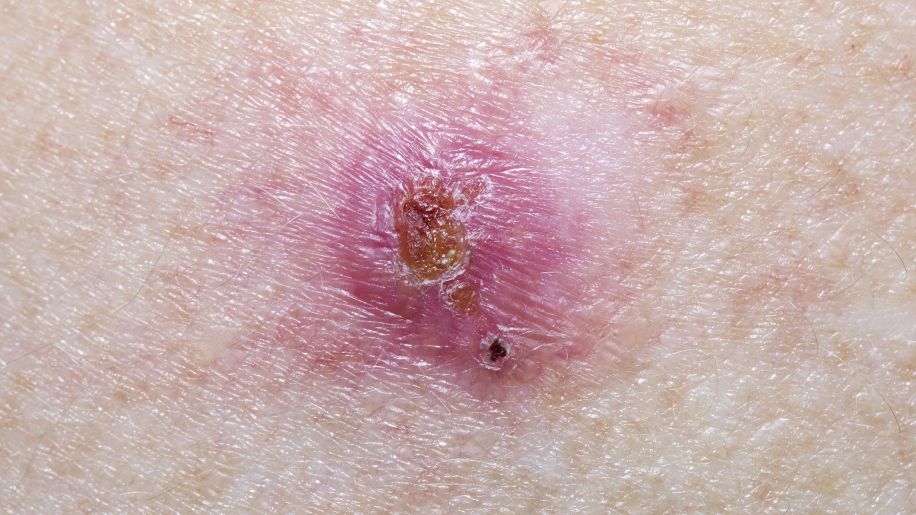
Basal cell carcinomas may be nodular and shiny
The most common type of skin cancer is basal cell carcinoma (BCC). In fact, this type comprises 8 out of 10 skin cancers, according to the American Cancer Society. These cancers can appear almost anywhere on the body, but are most likely to form on the head, neck, arms, and other areas that are consistently exposed to the sun.
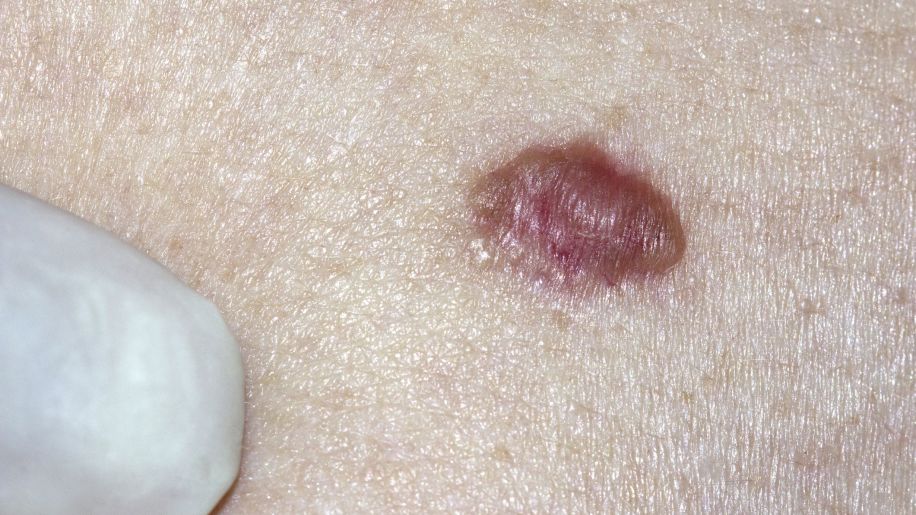
Basal cell carcinomas may be raised growths
In people with light skin, basal cell carcinomas are usually pink, red, or white and have a shiny surface. They may also be tan, black, or brown. In Black people or people with brown skin, they are frequently tan, black, or brown.
The edges of the growth are often slightly raised, sometimes with a crusted indentation in the middle of the lesion. A basal cell carcinoma can be mistaken for a regular mole.
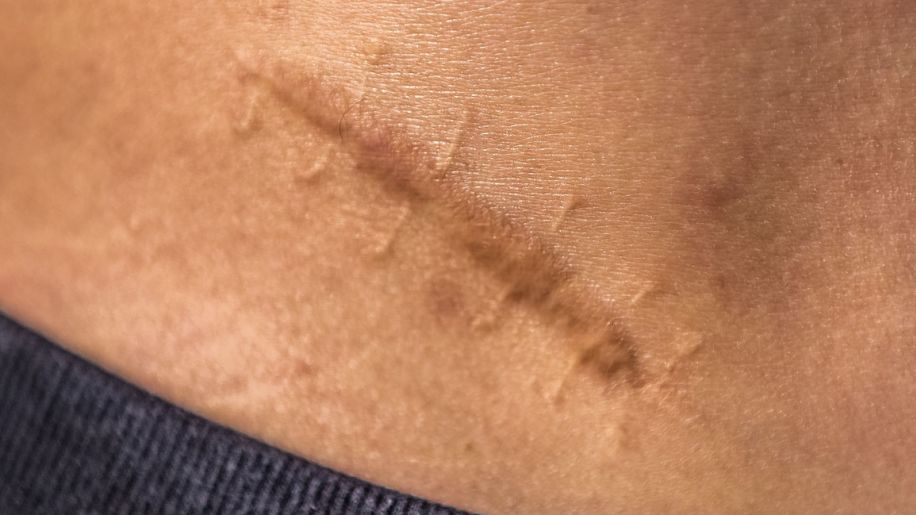
Basal cell carcinomas can appear as pearly bumps or nodules
Most basal cell carcinomas do not spread to other areas of the body. They are easily treated in most cases but can leave a disfiguring scar when removed if they’re allowed to grow too large.
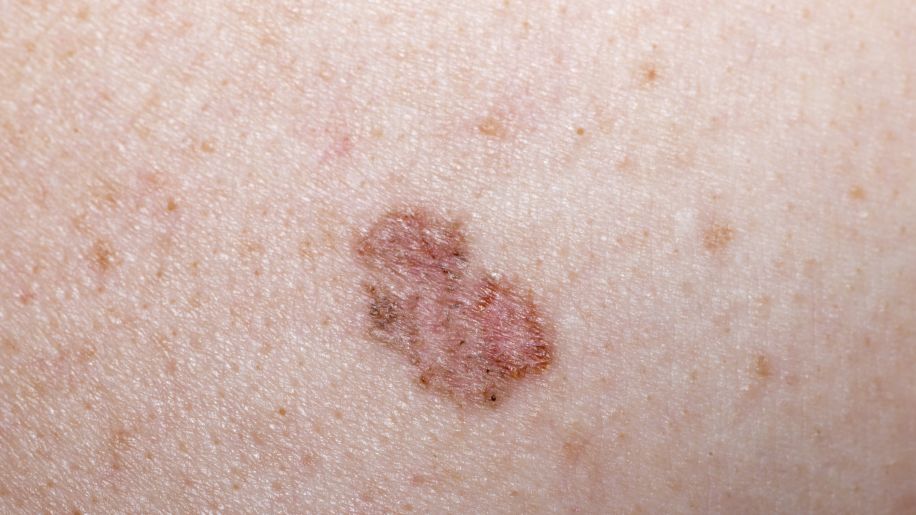
Basal cell carcinomas may look like scarring
Scar-like areas are also common with basal cell carcinomas. These may appear as discolored or waxy areas, with textures that appear shiny, stretched, or taut.
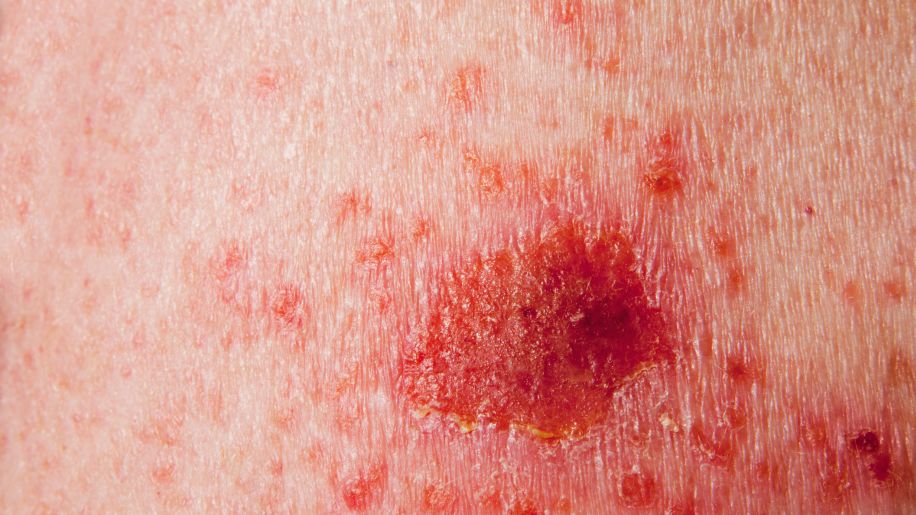
Basal cell carcinomas can be dry and patchy
Basal cell carcinomas can also present on fair skin as reddish or dry, crusty patches that may be painful or itchy. These types of lesions usually appear around the face, chest, shoulder, arms, or legs.
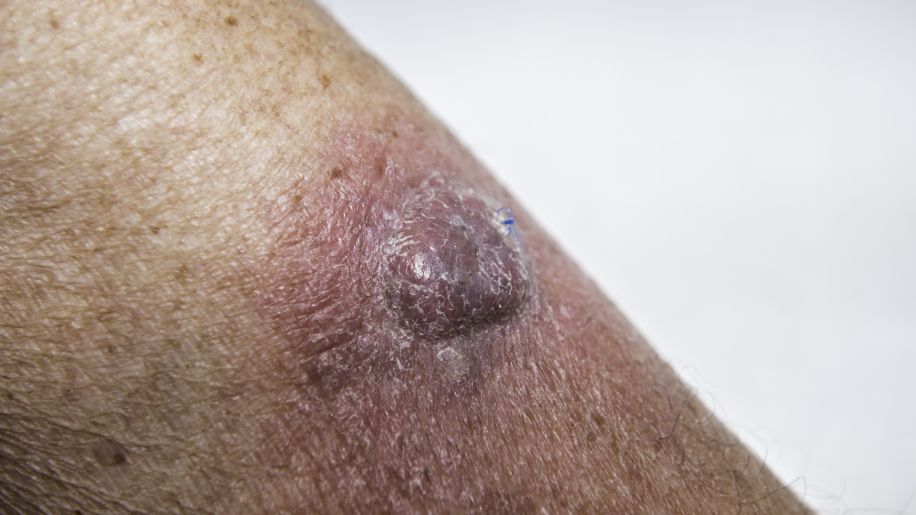
Squamous cell carcinomas can form as dome-like lesions
Another common skin cancer is squamous cell carcinoma (SCC). Although it is more likely to spread than basal cell carcinoma, SCC can be successfully treated if caught early. SCC usually forms on areas of the skin that are repeatedly exposed to the sun, such as the head, neck, hands, and the lower legs.
SCC can form as a dome-like lesion that may turn firm and crusty.
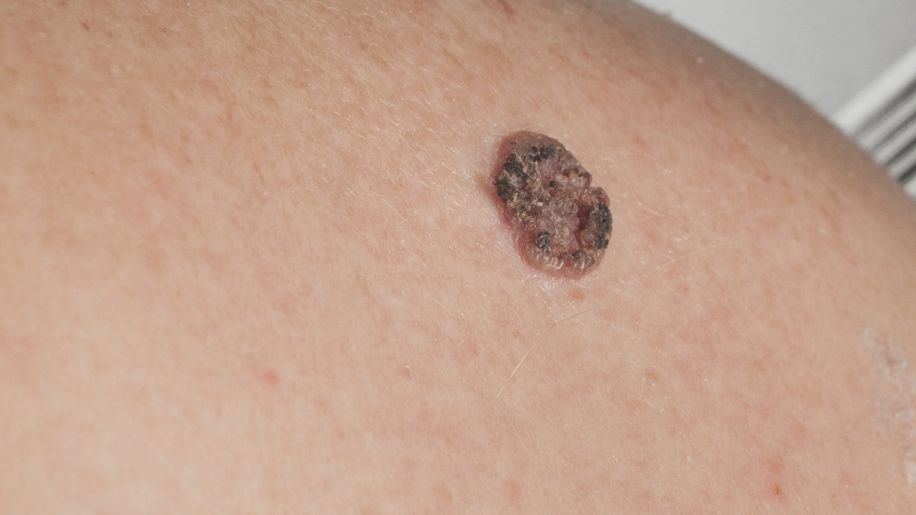
Squamous cell carcinomas may be raised and sore-like
Squamous cell carcinoma can also appear as a raised, discolored bump, sore, or open wound. Sometimes, these areas will bleed or take the shape and feel of a wart.
Other squamous cell carcinomas can appear as rash-like patches. The skin’s surface can also become scaly and rough.
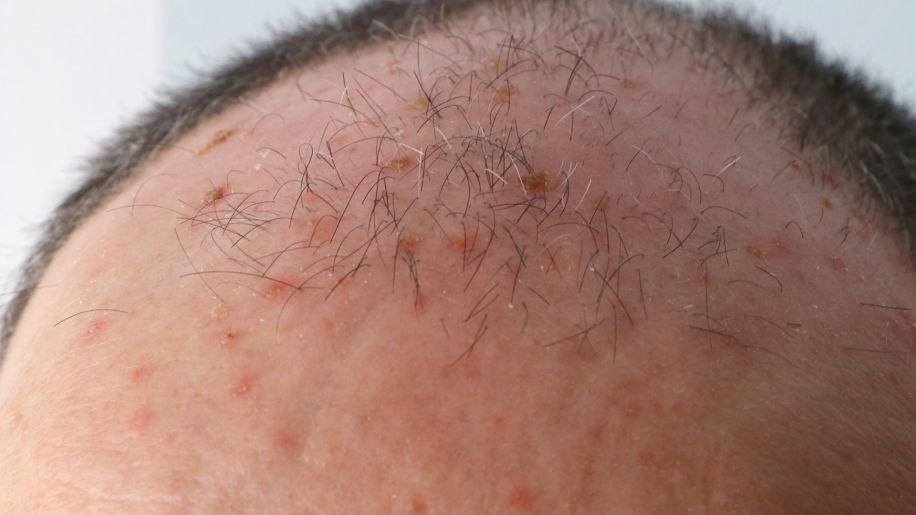
Actinic keratosis areas are dry and scaly
Actinic keratosis (AK), also known as solar keratosis, is a precancerous form of sun damage that can appear in areas on the body that get a lot of sun exposure. People often have more than one. If left untreated, these lesions can turn into squamous cell carcinoma.
Most AK spots are dry, scaly, and coarse to the touch.
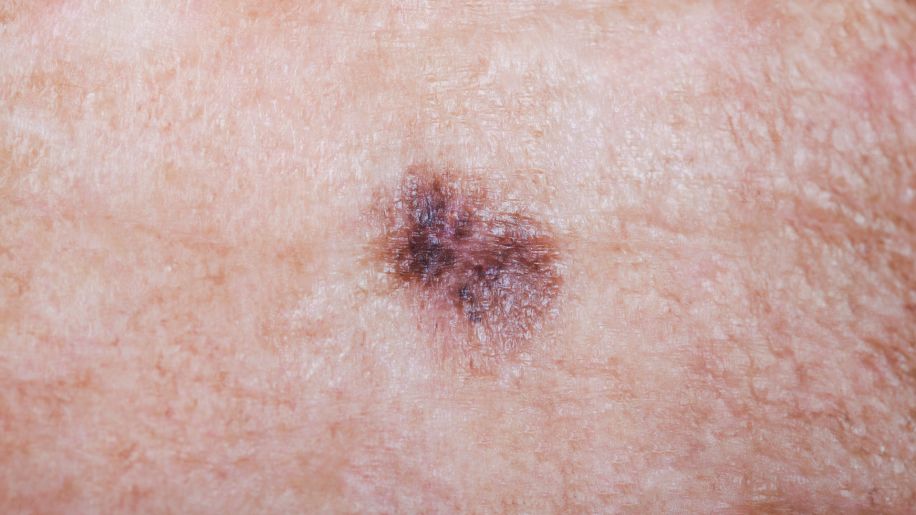
Melanoma can be flat and uneven
Although melanoma is not as common as other forms of skin cancer, it’s more dangerous because it tends to spread to other organs if left untreated. This type of cancer originates in the melanocytes, skin cells that make the pigment known as melanin. Melanin is responsible for giving your skin its color.
Most melanomas tend to form on the chest, back, and legs, but can develop anywhere on the body, like hands, feet, or nail areas.
The most common type of melanoma—especially among Caucasians—is superficial spreading melanoma. These spots are usually flat to the touch, tan and brown, and have uneven borders.
Early detection is especially important with melanoma because treatment success is directly related to the size and depth of the cancerous growth.
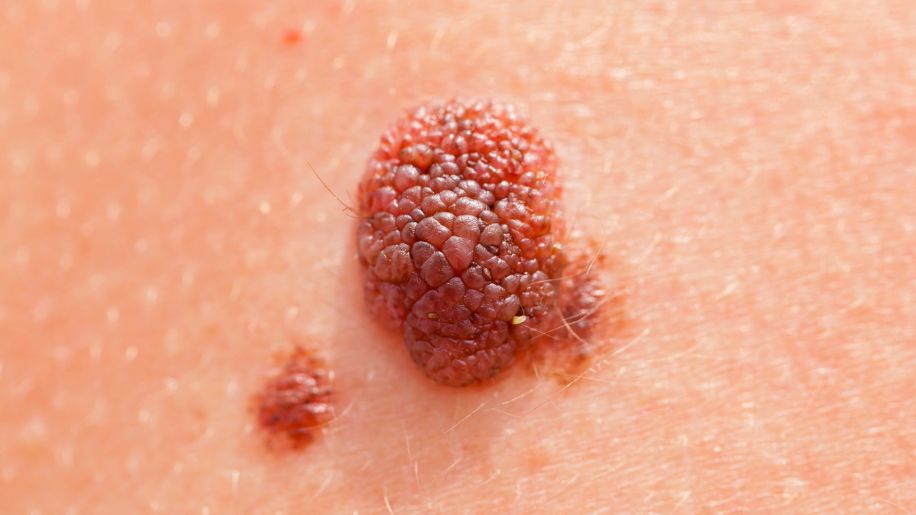
Melanoma can be nodular and thick
Some melanomas—around 15 to 30 percent—are nodules, or thick lesions that are usually blackish-blue, bluish-red, or colorless. In some cases, these nodules can appear as open sores and may even bleed.
Nodular melanoma is usually invasive when it’s first diagnosed by a dermatologist, and it can penetrate deeper into the skin and even spread to other areas of the body.
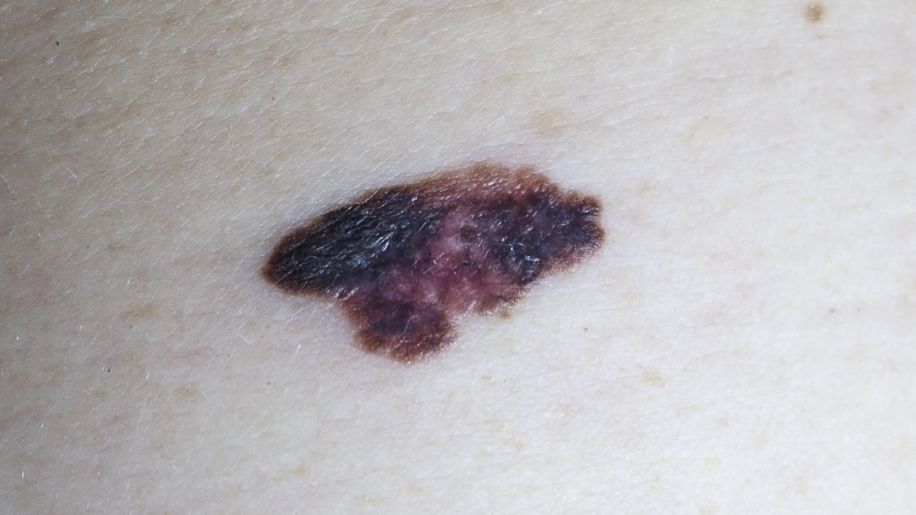
Melanoma can be asymmetrical
Melanomas can be asymmetrical, with uneven borders. These types of spots can be black, brown, tan, gray, and in some cases, pink.

Skin cancer prevention tips
When you’re in the sun, it’s important to wear a hat, sunglasses, and clothing that covers any exposed skin. Sunscreen is, of course, also key. Pick a broad-spectrum sunscreen that protects the skin from both UVA and UVB rays and has a sun protection factor (SPF) of 30 or more. Staying in the shade as much as possible when you are outside is helpful, too.
And always steer clear of tanning beds, since their UV rays can increase the risk of melanoma.
In addition to basic sun safety, some healthcare providers suggest that you do a skin self-exam every month to check for suspicious growths. If you see anything unusual, visit your provider for a more thorough exam. It’s also worth talking to your provider about whether having a regular in-office skin check makes sense for you, based on your risk factors for skin cancer.
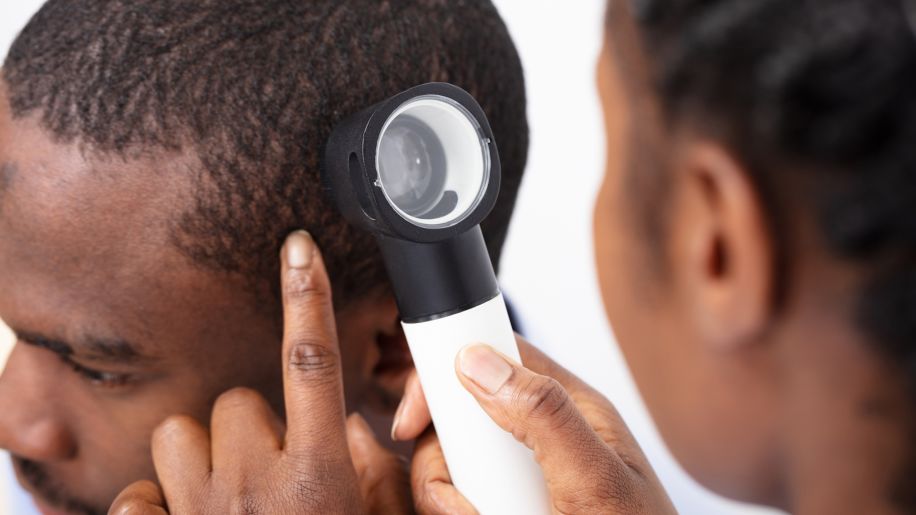
Skin cancer treatments
Treatment for skin cancer depends on the type and stage of the cancer you have, the location and size of the lesion, and your overall health. Dermatologists will usually perform a thorough skin exam or just remove the lesion to determine if you have skin cancer. If the lesion hasn’t spread, simple excision or local treatment is usually all that’s needed.
If you have a non-melanoma skin cancer or actinic keratosis, the most common treatment options include:
- Liquid nitrogen cryotherapy
- Surgery
- Radiation therapy
- Chemotherapy
- Photodynamic therapy
- Biologic therapy
- Targeted therapy
If you have early-stage melanoma, surgery may be sufficient. Other options, like immunotherapy, targeted therapy, chemotherapy, and radiation therapy may be recommended if you have more advanced melanoma.
You and your provider can discuss the treatment options that make sense for you.

American Academy of Dermatology Association. “Skin Cancer.” 2021. Accessed May 19, 2021.
Cleveland Clinic. “Skin Cancer.” February 15, 2019. Accessed May 19, 2021.
American Cancer Society. “What Are Basal and Squamous Cell Skin Cancers?” July 26, 2019. Accessed May 19, 2021.
Skin Cancer Foundation. “Basal Cell Carcinoma Warning Signs.” January 2021. Accessed May 19, 2021.
Skin Cancer Foundation. “Basal Cell Carcinoma Overview.” March 2021.” Accessed May 19, 2021.
American Academy of Dermatology Association. “Skin Cancer Types: Squamous Cell Carcinoma Overview.” 2021. Accessed May 19, 2021.
American Academy of Dermatology Association. “Types of Skin Cancer.” 2021. Accessed May 19, 2021.
American Cancer Society. “Signs and Symptoms of Basal and Squamous Cell Skin Cancers.” July 26, 2019. Accessed May 19, 2021.
American Academy of Dermatology Association. “Actinic Keratosis: Diagnosis and Treatment.” 2021. Accessed May 19, 2021.
Skin Cancer Foundation. “Actinic Keratosis Warning Signs.” January 2021. Accessed May 19, 2021.
American Cancer Society. “What is Melanoma Skin Cancer?” August 14, 2019. Accessed May 19, 2021.
National Cancer Institute. “Melanocyte.” 2021. Accessed May 19, 2021.
American Academy of Dermatology Association. “What Kids Should Know About What Gives Hair Its Color.” 2021. Accessed May 19, 2021.
MedlinePlus. “Melanoma.” January 21, 2020. Accessed May 19, 2021.
Pathobiology of Human Disease. “Nodular Melanoma.” 2014. Accessed May 19, 2021.
William H. Higgins II and David Leffell. “Melanoma at Its Most Curable.” Skin Cancer Foundation. May 2, 2017.
AiM at Melanoma Foundation. “Stage 0 Melanoma (in situ).” 2021. Accessed May 19, 2021.
American Cancer Society. “Be Safe in the Sun.” 2021. Accessed May 19, 2021.
National Cancer Institute. “Skin Cancer Treatment (PDQ) – Patient Version.” December 11, 2020. Accessed May 19, 2021.
American Cancer Society. “How Do I Protect Myself from Ultraviolet (UV) Rays?” July 23, 2019. Accessed May 19, 2021.
American Cancer Society. “How to Do a Skin Self-Exam.” July 23, 2019. Accessed May 19, 2021.
U.S. Food & Drug Administration. “Ultraviolet (UV) Radiation.” August 19, 2020. Accessed May 24, 2021.
Skin Cancer Foundation. “Ask the Expert: Is There a Skin Cancer Crisis in People of Color?” July 5, 2020.
Featured Content
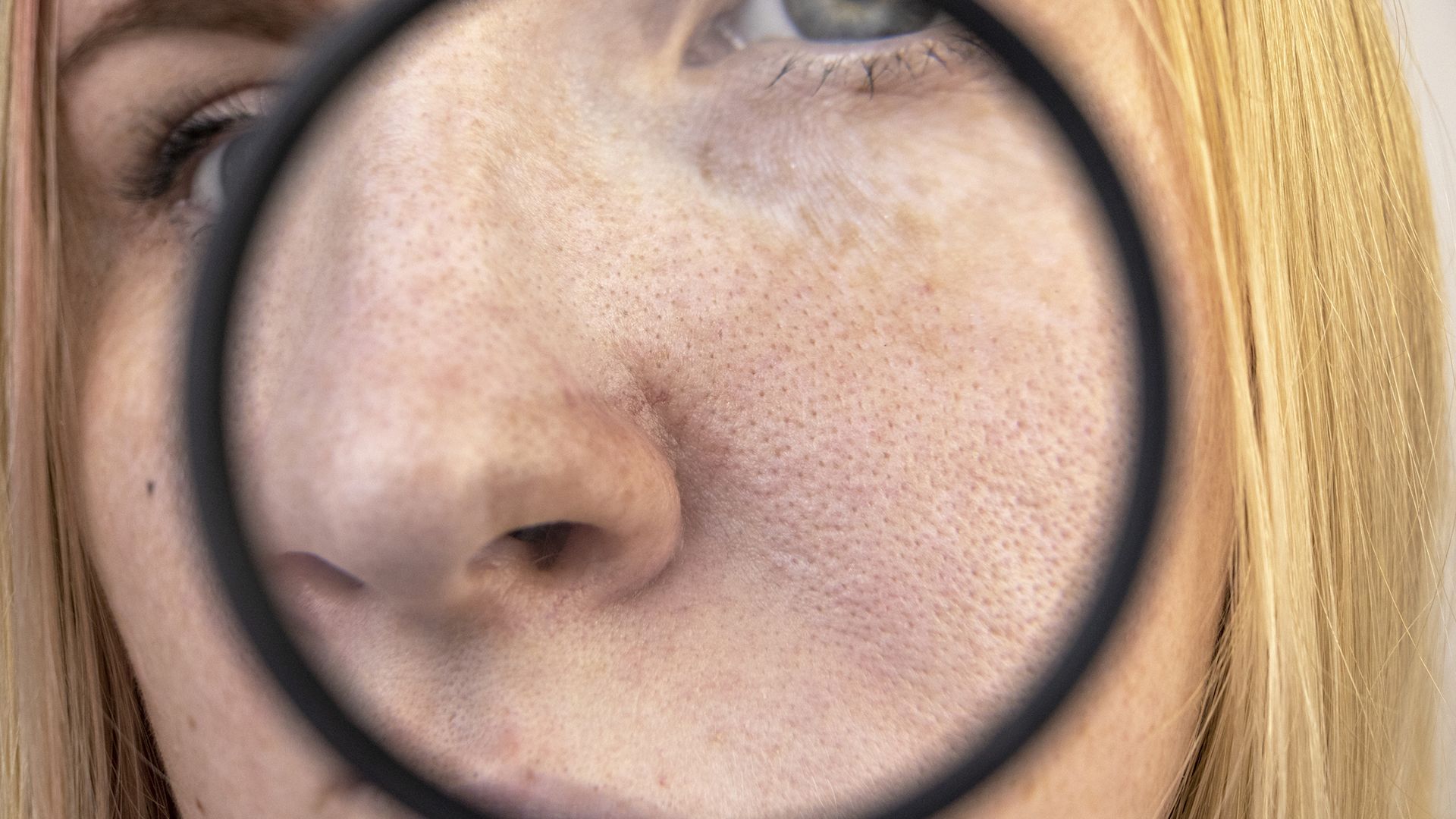
article
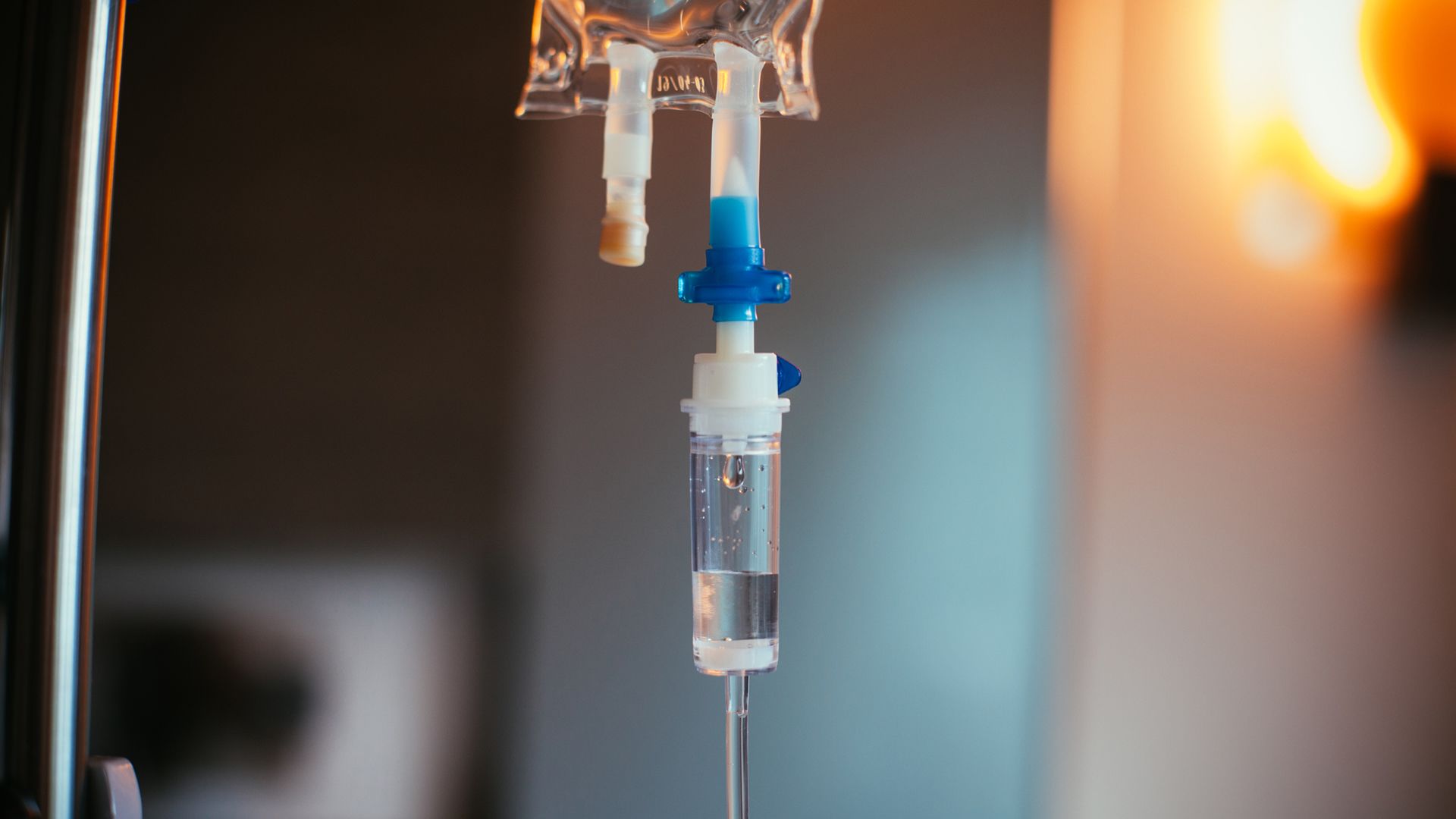
article

article


video

article
